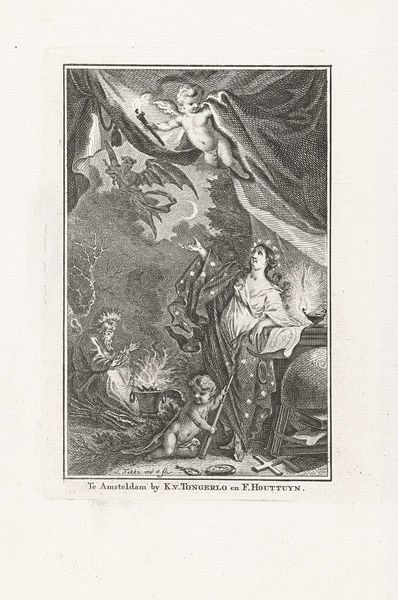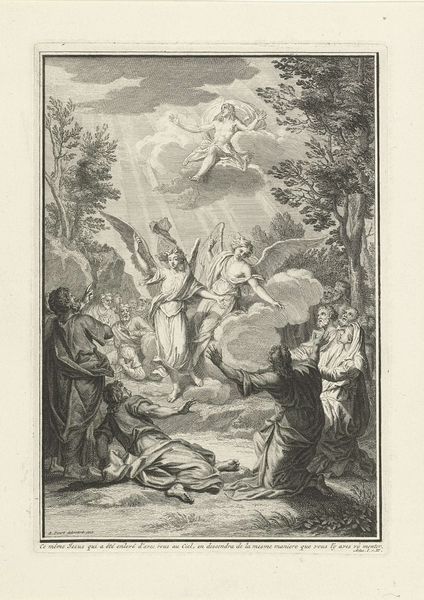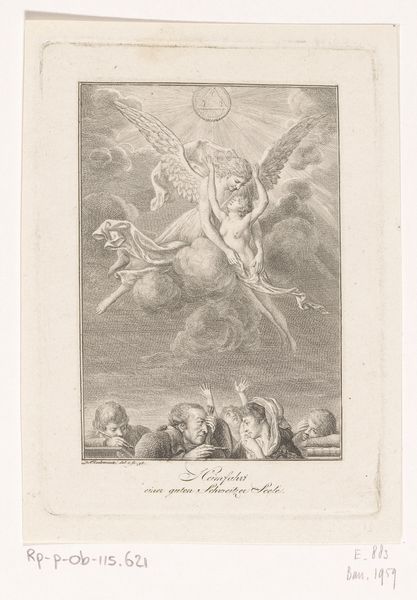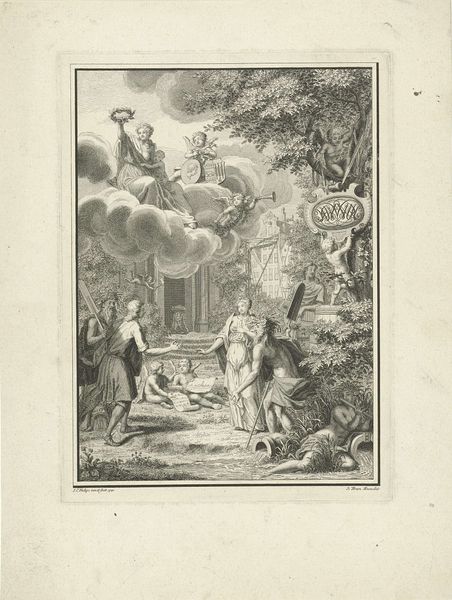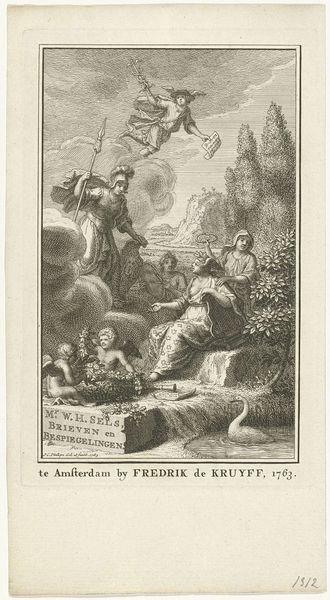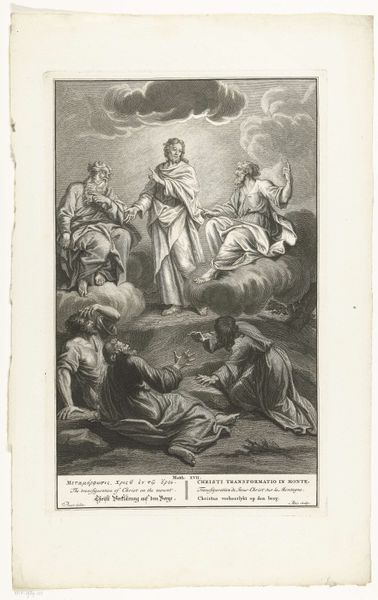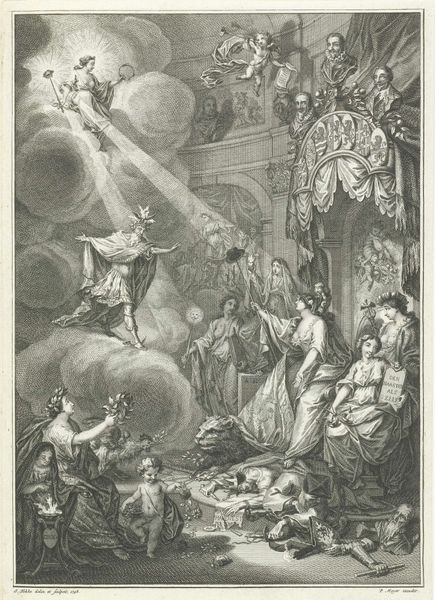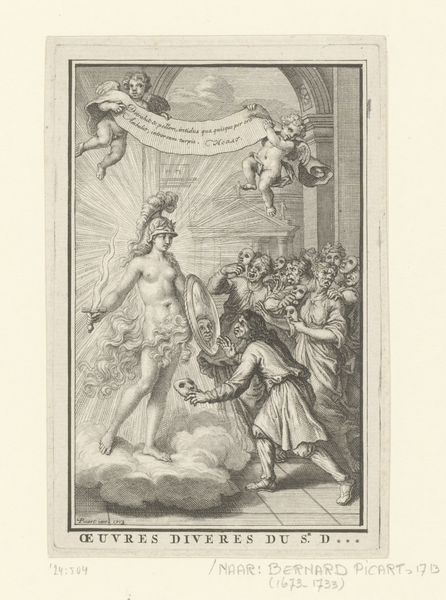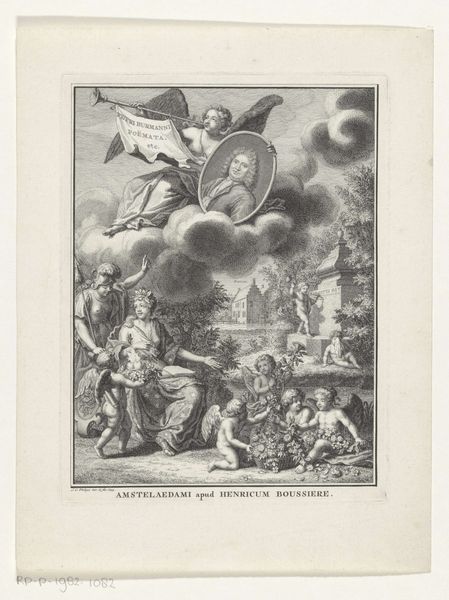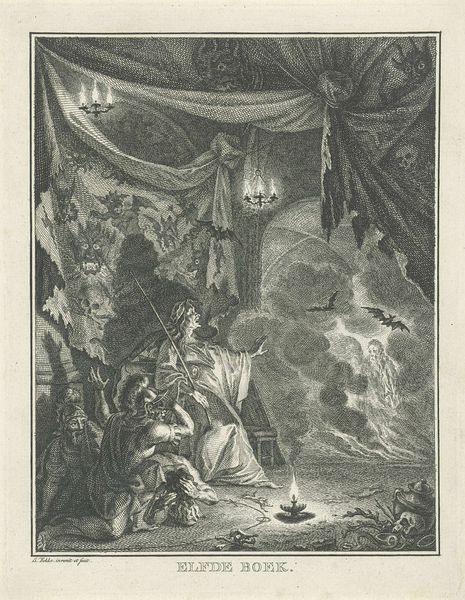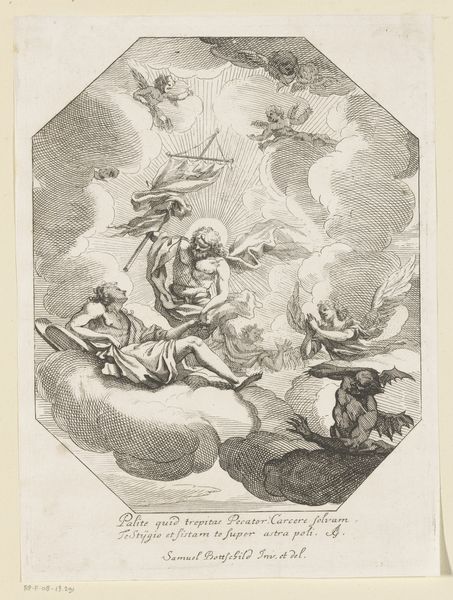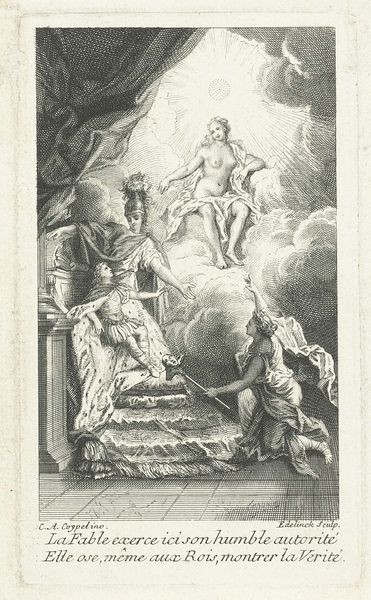
engraving
#
allegory
#
baroque
#
old engraving style
#
figuration
#
historical fashion
#
line
#
engraving
Dimensions: height 138 mm, width 82 mm
Copyright: Rijks Museum: Open Domain
Editor: This is "Allegorische titelpagina met Geloof, Hoop en Liefde," or Allegorical Title Page with Faith, Hope, and Charity, an engraving by Jan Caspar Philips from 1733. The allegorical figures are bathed in this heavenly light. How do we interpret this symbolism of virtue in a historical context? Curator: This piece speaks volumes about the public role of art in the 18th century, particularly within the context of Amsterdam’s burgeoning publishing industry. Title pages like this were designed to not only introduce the content of the book, but also to communicate and promote the values it espoused. Look at the positioning of the figures – Faith, Hope, and Charity – elevated on a kind of stage. What do you think that implies about their importance to the readership of the time? Editor: That they were aspirational figures, ideals to strive toward, promoted by this particular publication. The figures dominate. What was this book even about? Curator: That’s where the politics of imagery come into play. Without knowing the exact title, we can assume it touched upon themes of morality and perhaps even civic duty. The Baroque style, with its dramatic lighting and idealized forms, was often used to ennoble its subjects. Do you think this idealization made these virtues seem attainable or perhaps intimidating to the average reader? Editor: Probably both! On the one hand, who doesn’t aspire to be virtuous? On the other, the distance between aspiration and reality might feel quite large. That balance between the ideal and the real – it shapes our reception. Curator: Precisely. The engraving becomes not just an illustration, but a social and cultural artifact, reflecting and shaping the values of its time. It prompts us to question the role of art in propagating ideologies and the public reception of such visual rhetoric. Editor: Thinking about how the image aimed to influence its audience changes how I see the artwork. Curator: Exactly. These images had power.
Comments
No comments
Be the first to comment and join the conversation on the ultimate creative platform.
